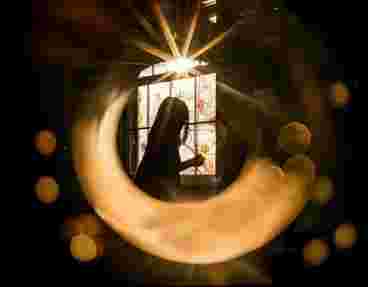Uvod o fotografiranju v protisvetlobi
Fotografiranje v protisvetlobi je očarljiva tehnika, ki vključuje zajemanje svetlobe, ki sveti skozi predmet ali okoli njega, in ne neposredno nanj. S to metodo lahko ustvarite osupljive in eterične slike, ki so očarljive in hipnotizirajoče. V tem članku bomo raziskali koncept fotografiranja v protisvetlobi, njegove prednosti in kako ga uporabiti za ustvarjanje osupljivih slik.

Magija Fotografiranje v protisvetlobi
Fotografiranje v protisvetlobi je edinstvena in prepričljiva tehnika, ki lahko običajne prizore spremeni v izjemne. Pri njej je vir svetlobe za objektom, kar ustvari učinek halo, zaradi katerega objekt izstopa in se zdi skorajda nadzemeljski. Ta pristop je še posebej učinkovit za pokrajine, morske pokrajine in portrete.
Ustvarjanje globine in razsežnosti
Ena najpomembnejših prednosti fotografiranja v protisvetlobi je sposobnost ustvarjanja občutka globine in razsežnosti na sliki. Ker je vir svetlobe za objektom, se med objektom in ozadjem ustvari kontrast, zaradi česar je objekt videti bolj tridimenzionalen. Ta učinek je še posebej opazen pri krajinski fotografiji, kjer lahko svetloba ustvari osupljiv kontrast med ospredjem in ozadjem.
Dodajanje drame in čustev
Fotografija z osvetlitvijo ozadja lahko sliki vdahne tudi dramatičnost in čustvenost. Če je vir svetlobe nameščen za predmetom, lahko vzbudi občutek skrivnostnosti in intrige ter gledalce spodbudi, da želijo izvedeti več o predmetu. Ta dramatični učinek je še posebej očiten pri portretni fotografiji, kjer lahko svetloba ustvari občutek intimnosti in ranljivosti.
Ključni nasveti za učinkovito fotografiranje v protisvetlobi
Za učinkovito fotografiranje z osvetlitvijo ozadja je treba upoštevati nekaj bistvenih nasvetov. Prvič, zagotovite, da je vir svetlobe za objektom in ne neposredno pred njim. Takšna postavitev ustvari značilen učinek halo. Drugič, izogibajte se preveč svetlim virom svetlobe, da preprečite ostre sence in prekomerno osvetlitev; raje izberite mehko, razpršeno svetlobo, na primer ob sončnem vzhodu ali zahodu.
Uporaba hitrih hitrosti zaklopa
Pomemben nasvet je tudi uporaba hitrega časa zaklopa za zamrznitev gibanja predmeta, kar je ključnega pomena za preprečevanje zamegljenosti. To je še posebej pomembno pri krajinski fotografiji, kjer lahko elementi, kot je veter, povzročijo gibanje dreves in listja.
Pravilne nastavitve osvetlitve
Zagotavljanje pravilne osvetlitve je lahko pri prizorih z osvetlitvijo od zadaj zahtevno. Poskušajte osvetliti svetle dele, da slika ne bo pretemna in da se ne bodo izgubile podrobnosti v sencah. To ravnovesje je ključno za doseganje dobro osvetljene fotografije z osvetlitvijo od zadaj.
Zaključek fotografiranja v protisvetlobi
Fotografiranje v protisvetlobi je edinstvena in očarljiva tehnika, ki lahko običajne prizore povzdigne na izjemno raven. Če vir svetlobe postavite za objekt, lahko ustvarite halo podoben učinek, zaradi katerega objekt izstopa in se zdi skorajda nezemeljski. Z upoštevanjem nasvetov, opisanih v tem članku, lahko obvladate fotografiranje v ozadju in ustvarite osupljive in očarljive slike. Ko boste naslednjič fotografirali, preizkusite fotografiranje v protisvetlobi in odkrijte osupljive slike, ki jih lahko ustvarite.
POGOSTA VPRAŠANJA: Fotografiranje v protisvetlobi
1.Kaj je fotografija z osvetlitvijo?
To je tehnika, pri kateri je vir svetlobe nameščen za objektom in ga osvetljuje od zadaj. Ta pristop ustvari učinek avreole in poudari obris predmeta.
2.Zakaj je fotografija z osvetlitvijo ozadja edinstvena?
Običajne prizore lahko spremeni v izjemne, saj ustvari eterične in očarljive slike z občutkom globine in razsežnosti.
3.Kakšne so prednosti fotografiranja v protisvetlobi?
- Globina in dimenzija: Ustvari tridimenzionalni učinek, saj je predmet v kontrastu z ozadjem.
- Drama in čustva: Dodaja občutek skrivnostnosti, intrige in intimnosti, zlasti pri portretih.
4. Kako dosežete učinek halo pri fotografiranju v protisvetlobi?
Vir svetlobe postavite za objekt, da ustvarite učinek aureole, zaradi česar objekt izstopa.
5. Katera vrsta vira svetlobe je najboljša za fotografiranje v protisvetlobi?
Mehki, razpršeni viri svetlobe, kot so tisti ob sončnem vzhodu ali zahodu, so idealni, da se izognete ostrim sencam in pretirani osvetlitvi.
6. Zakaj je pri fotografiranju v protisvetlobi pomemben hiter čas zaklopa?
Hiter čas zaklopa pomaga zamrzniti gibanje predmeta in prepreči zameglitev, zlasti v dinamičnih prizorih, kot so pokrajine s premikajočimi se elementi.
7. Kako upravljate osvetlitev pri fotografiranju v protisvetlobi?
Izpostavite svetle dele, da slika ne bo pretemna in da se ne bodo izgubile podrobnosti v sencah, ter tako dosežete uravnoteženo osvetlitev.
8. Kdaj je fotografiranje z osvetlitvijo ozadja najučinkovitejše?
Še posebej učinkovit je pri fotografiranju pokrajin, morskih pokrajin in portretov, saj poveča vizualno privlačnost in čustveni učinek slik.
9. S kakšnimi izzivi se lahko soočite pri fotografiranju v protisvetlobi?
- Upravljanje izpostavljenosti, da bi se izognili premajhni ali preveliki izpostavljenosti
- poskrbite, da vir svetlobe ni preveč svetel, da preprečite ostre sence.
10. Ali lahko kdo poskusi fotografirati v protisvetlobi?
Da, z upoštevanjem navedenih nasvetov lahko fotografi na vseh ravneh eksperimentirajo s fotografiranjem z osvetlitvijo ozadja in ustvarijo osupljive in očarljive slike.
